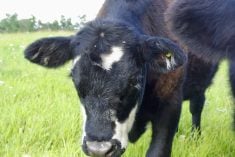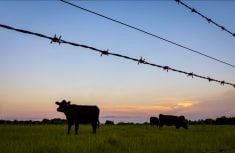“Civilizations have marched blindly toward disaster because humans are wired to believe that tomorrow will be much like today.” — Roy Scranton, Learning to Die in the Anthropocene
There’s a word for the new era we live in: the Anthropocene. This term represents the idea that we have entered a new epoch in Earth’s geological history, one characterized by the arrival of the human species as a geological force. The biologist Eugene F. Stoermer and the Nobel-Prize-winning chemist Paul Crutzen advanced the term in 2000, and it has steadily gained acceptance. In particular, changes wrought by global warming will affect not just the world’s climate and biological diversity, but its very geology — and not just for a few centuries, but for millenniums.
Read Also

What to know before you go to Agribition 2025
If you’re attending Agribition 2025, this is the place to find out about tickets, dates and what’s happening this year.
The idea of a new normal wrought by the COVID-19 pandemic really hit home while watching the National Finals Rodeo, “The Rodeo of Rodeos,” held at the Globe Life Field in Arlington, Texas. Everywhere cameras captured action, there were cowboys wearing masks and cowboy hats. Prophecy? Reality?
Few things in life today remain unscathed by the COVID-19 pandemic. COVID-19 changed social patterns, converting them into “bubbles” of day-to-day contact. It changed what we do to entertain ourselves, who we talk to, how we talk to others, what we eat, how we buy groceries and most of all how we work. Social distancing and restrictions on where we go have transformed places of fun into ghostly quiet realms.
Some are worried about any relationship between bovine coronaviruses (BCoVs) and COVID-19. Cattle shed BCoVs in feces and nasal secretions. The disease also invades the lung. BCoVs cause three distinct clinical syndromes in cattle: calf diarrhea; winter dysentery with hemorrhagic diarrhea in adults; and respiratory infections in cattle of various ages, including the bovine respiratory disease complex or shipping fever of feedlot cattle. So far there is no link with COVID-19.
Trying to keep pace with what’s happening in the veterinary profession has created Zoom fatigue and eyestrain from lurching presentations and unsynchronized speech on an iPhone. Haunted by not seeing old friends, where we enjoyed sharing a drink and hearing new jokes, I feel an ache for “normal” as acute as any homesickness ever felt. The twinge returns every time I put on a mask, or think I walked by someone I failed to recognize behind “cover,” friends that would normally call for a “how ya doin’?” More than ever before, I have come to realize there is productivity that comes with meeting face-to-face. Has that changed?
The pandemic altered veterinary practices so that they will never return to normal as we knew them. Masks are routinely worn. Pharmaceuticals are often delivered curbside. Telemedicine and online consultation are standard. Some farm calls cannot be avoided e.g. obstetrical cases. Client and veterinarian understand that with every interaction comes an element of risk. Farm calls are preceded by questions about the health of people they will be in contact with.
Generations of consumers have never known real hunger, but in 2020 they encountered empty shelves in grocery stores for the first time and did so with apprehension. Panic buying of paper products like toilet tissue created anxiety. Emergency stockpiles of red meat filled consumers’ deep freezes everywhere and when full, new ones were bought. Prices for beef and pork skyrocketed. Canned beans, flour and yeast became scarce for several months as home pantries bulged with pasta and sugar.
Large corporate entities in the processing sector faltered through the early stages of the pandemic. It didn’t take long for the packing and processing industries to realize they were unwitting participants in super-spreader events. Unmanageable numbers of people working shoulder-to-shoulder on processing lines, many of them newer immigrants cohabiting in single dwellings, became infected. Major plants shut down, retooled and learned to work more carefully.
Some people hoarded food; others bought necessities online. Amazon flourished. Retailers trying to limit customer intake lined them up at the front door. An estimated 23 per cent of employers allowed staff to work from home the majority of the time. The ghost kitchen and meal kit market moved from $5 million per year a decade ago, to $350 million today. Farmers willingly participated in direct sales to consumers. More consumers are buying meat online. Retailers are investing billions in e-commerce systems, which indicates online groceries are probably here to stay.
Consumers critically look at how food is grown, harvested and produced — a lasting effect attributable to the COVID-19 pandemic. It’s easy to forget that 2020 gave us more than a pandemic. The year represented the West Coast’s worst fire season and the most active Atlantic hurricane season on record.
The COVID-19 pandemic touched North America’s agriculture industry and induced change that took a population hostage, pushing it a long way from the axis of normal. The fallout accelerated production and consumption trends that will never revert to what we once called normal. This will be the year we’ll look back on for the next century. What will evolve as normal in the lives of generations ahead will hopefully prevent a repeat. We should not be too quick to take what existed before and attempt to recreate it. In a post-pandemic world, the charge becomes what worked, and what didn’t work. Only then can we chart a new path forward.

















